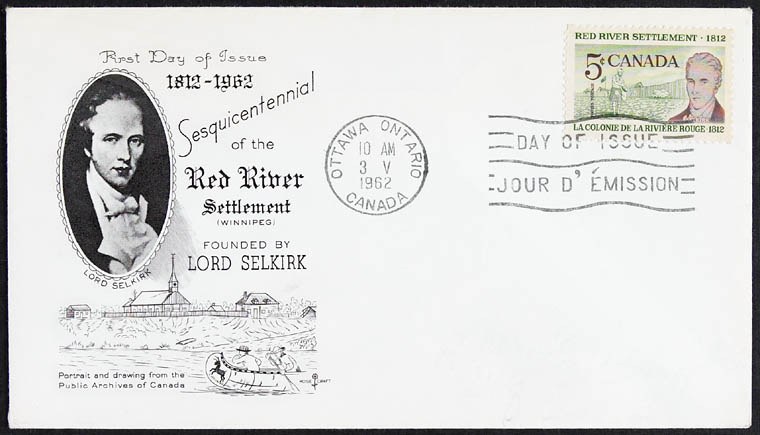Stock-raising is an important facet of subsistence farming, especially when the nearest market is hundreds of miles away. At the Selkirk Settlement on the Red River, an early attempt at an agrarian settlement in Western Canada, the first livestock were transported by the legendary fur-trader and explorer Peter Fidler. A.S. Morton, in his classic
History of Prairie Settlement (1938) notes, the bull and two cows "must have been brought in as calves in the canoes. They would be taught to jump in and out, and would be driven over the portages." (Morton, 10) One can only wonder of the difficulties of transporting cattle in this manner.
 |
| Selkirk Settlement. National Archives of Canada / C-008714 |
Getting cattle to the colony proved near impossible. Another bull and heifer were brought in by Miles Macdonnell, who picked them up from the Hudson's Bay Company at Oxford House. Morton describes the ill fortune of these animals once arriving at the colony. He notes that Fidler's bull,
"proved vicious and was killed, though the scarcity of food may have had as much to do with its end as its viciousness, and, calamity upon calamity, the first, now the only remaining, bull was drowned while drinking at the water-hole in the ice on the river. Selkirk urged Miles Macdonell to send out horsemen to drive quietly into the settlement a herd of heifer buffalo (they grazed apart from the bulls except in the rutting season), and to attempt a cross with a European bull. This surely was a counsel of despair." (Morton, 16)
 |
150th Anniversary Stamp. Credit: Library and Archives Canada Copyright: Canada Post Corporation (stamp)
Copyright: Isobel M. Assad (cover) |
Little did Morton realize that crossing cattle with buffalo was indeed feasible, however, the successful hybrid took much experimentation in animal husbandry to perfect. By
some accounts success was not gained in the endeavour until 1957.
It was not until 1821 that a substantial herd of cattle was brought in from the United States. Livestock numbered 3 bulls, 6 oxen, 45 cows, and 39 calves with a number of sheep, horses and pigs as well. As Morton notes, it took eleven years and much suffering to establish a healthy herd of livestock at the Selkirk Settlement.


No comments:
Post a Comment